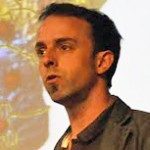Link to Pubmed [PMID] – 22491946
Development 2012 May;139(10):1842-50
African trypanosomes are flagellated protozoan parasites that cause sleeping sickness and are transmitted by the bite of the tsetse fly. To complete their life cycle in the insect, trypanosomes reach the salivary glands and transform into the metacyclic infective form. The latter are expelled with the saliva at each blood meal during the whole life of the insect. Here, we reveal a means by which the continuous production of infective parasites could be ensured. Dividing trypanosomes present in the salivary glands of infected tsetse flies were monitored by live video-microscopy and by quantitative immunofluorescence analysis using molecular markers for the cytoskeleton and for surface antigens. This revealed the existence of two distinct modes of trypanosome proliferation occurring simultaneously in the salivary glands. The first cycle produces two equivalent cells that are not competent for infection and are attached to the epithelium. This mode of proliferation is predominant at the early steps of infection, ensuring a rapid colonization of the glands. The second mode is more frequent at later stages of infection and involves an asymmetric division. It produces a daughter cell that matures into the infective metacyclic form that is released in the saliva, as demonstrated by the expression of specific molecular markers – the calflagins. The levels of these calcium-binding proteins increase exclusively in the new flagellum during the asymmetric division, showing the commitment of the future daughter cell to differentiation. The coordination of these two alternative cell cycles contributes to the continuous production of infective parasites, turning the tsetse fly into an efficient and long-lasting vector for African trypanosomes.



